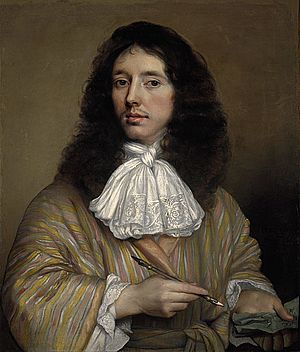Master of Work to the Crown of Scotland facts for kids
The Master of Works to the Crown of Scotland was a very important job in Scotland. This person was in charge of building, fixing, and looking after all the royal palaces, castles, and other properties belonging to the king or queen. Some of the main buildings they cared for were Holyroodhouse, Edinburgh Castle, Stirling Castle, Linlithgow Palace, and Falkland Palace.
This role was similar to the Surveyor of the King's Works in England. At first, people who held this job were often skilled builders or even church officials. But over time, the role changed. It became more about designing buildings, like a modern architect, rather than doing the actual hands-on building work.
Some early Masters of Works were important people in the royal court. For example, James Hamilton of Finnart was related to the king. John Scrymgeour was an expert in heraldry (family symbols). William Schaw was an administrator and played a big part in the history of Freemasonry. Later Masters of Works were more like the architects we know today. Some were still skilled craftsmen, like Robert Robertson, who was a carpenter. During the time of King James V, there was also a main carpenter, John Drummond of Milnab, who helped with building and even with cannons!
In the 1400s, a Master of Works might be hired for just one big project, like building a new palace. Records show that some of these early Masters were more like accountants, managing the money for the project. But in the 1500s, during the reign of King James V, the idea of a "Principal Master of Works" began. This person was responsible for all the king's building projects across Scotland. This job was usually for life.
After James Smith passed away in 1714, the job became less important. It turned into a "sinecure," which means it was a paid position that didn't require much work. In 1808, Robert Reid was named the King's Architect and Surveyor in Scotland. He became Master of Works in 1824. However, in 1831, the Scottish Office of Works joined with the English Office of Works. When Robert Reid retired in 1840, no one was hired to replace him. The Office of Works later became known as the Ministry of Works.
Who Were the Principal Masters of Works?
Here is a list of the main Masters of Works for the Scottish Crown. The dates show when they were officially appointed. Their appointments were recorded in the Register of the Privy Seal, which was a book of official documents. Sometimes, more than one person held the job at the same time, or someone acted as Master without an official appointment.
- 1529: Sir James Nycholay, or Nicolson, Master of Work at Stirling Castle.
- 1537: John Scrymgeour
- 1539: Sir James Hamilton of Finnart
- 1541: Robert Robertson (Main carpenter at Stirling Castle)
- 1543: John Hamilton of Milnburn
- 1579: Sir Robert Drummond of Carnock
- 1583: William Schaw
- 1602–1607: Sir David Cunningham of Robertland, who also worked for the King in England from 1604–1606.
- 1607–1634: Sir James Murray of Kilbaberton
-
-
- 1615: Walter Murray (Assistant Master of Works)
-
- 1629–1637: Sir Anthony Alexander
-
-
- 1632: William Govane of Cardrona and James Murray Jr. (Assistant Masters of Works)
-
- 1637–1641: Henry Alexander, 3rd Earl of Stirling
- 1641: Sir John Veitch of Dawyck
- 1643–1644: John Carmichael
- 1645–1649: Sir David Carmichael of Hyndford
- 1649: Sir Robert Montgomery
- 1660–1668: Sir William Murray of Dreghorn
The job was empty from 1668 to 1671.
- 1671–1678: Sir William Bruce of Balcaskie, Baronet
- 1678–1683: David Maitland (acting Master of Works)
- 1683–1788: James Smith
- 1689–1700: Sir Archibald Murray of Blackbarony, Baronet
- 1700–1704: James Scott of Logie
- 1704–1705: Sir Francis Scott of Thirlestane
- 1705–1714: John Campbell of Mamor
- 1705–1717: John Urquhart of Meldrum
- 1707–1714: James Smith (his position was renewed)
- 1717–1743: Sir John Anstruther of Anstruther
- 1743–1761: George Dundas
- 1761–1764: William Stewart of Hartwood
- 1764–1768: James Duff, from the Middle Temple, London
- 1768–1809: Lieutenant-Colonel James Pringle
- 1809–1824: James Brodie of Brodie
- 1824–1840: Robert Reid


